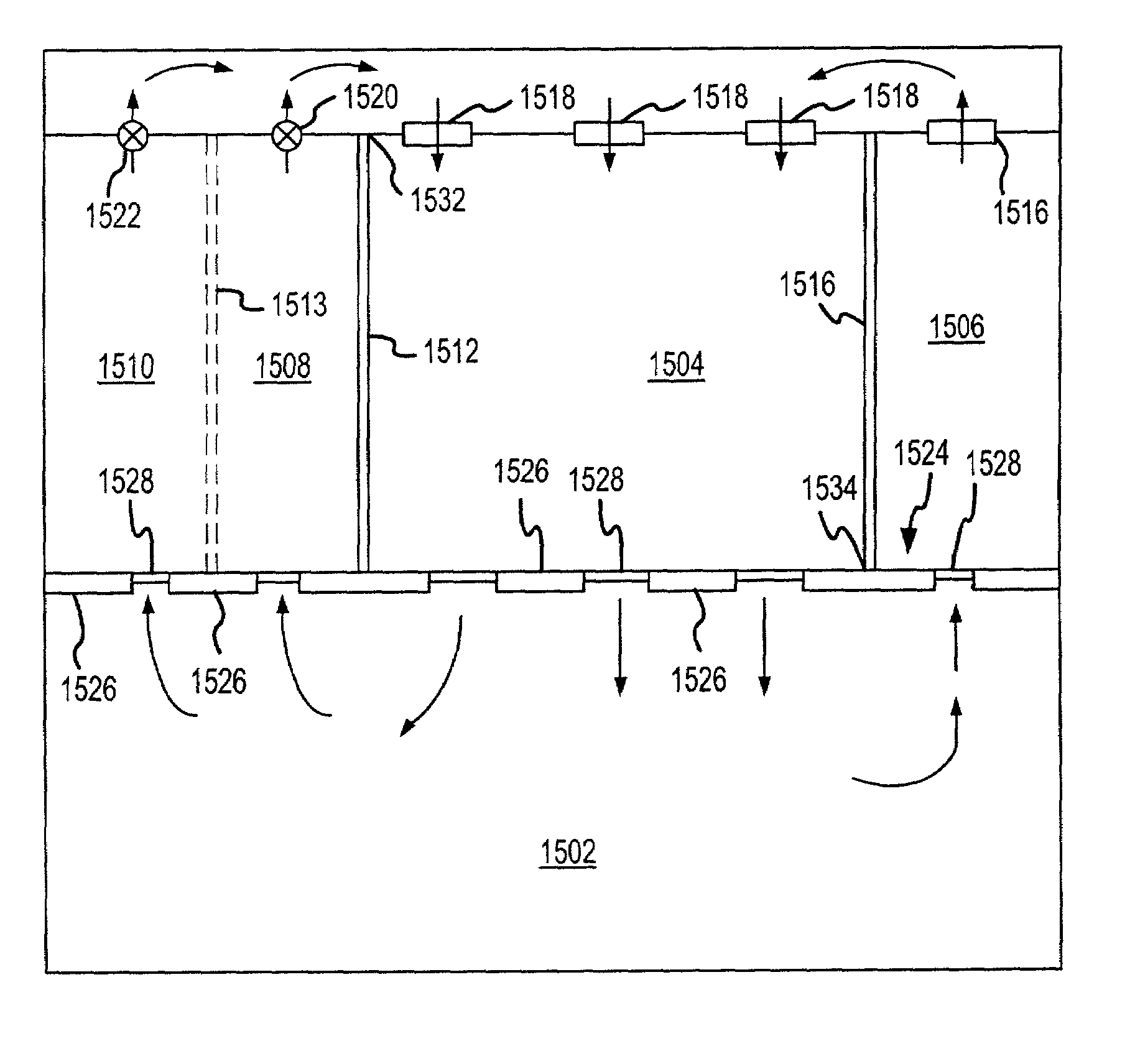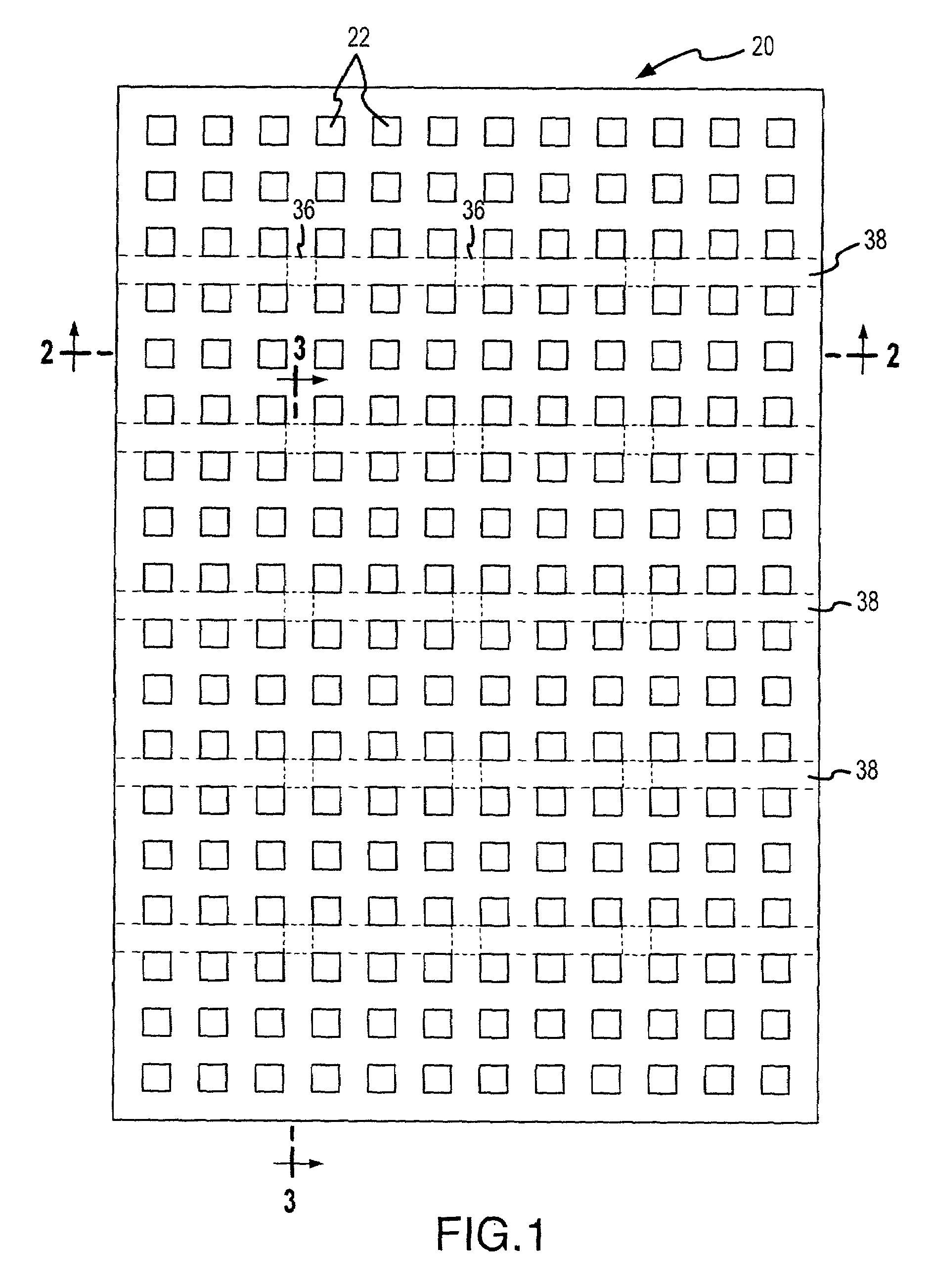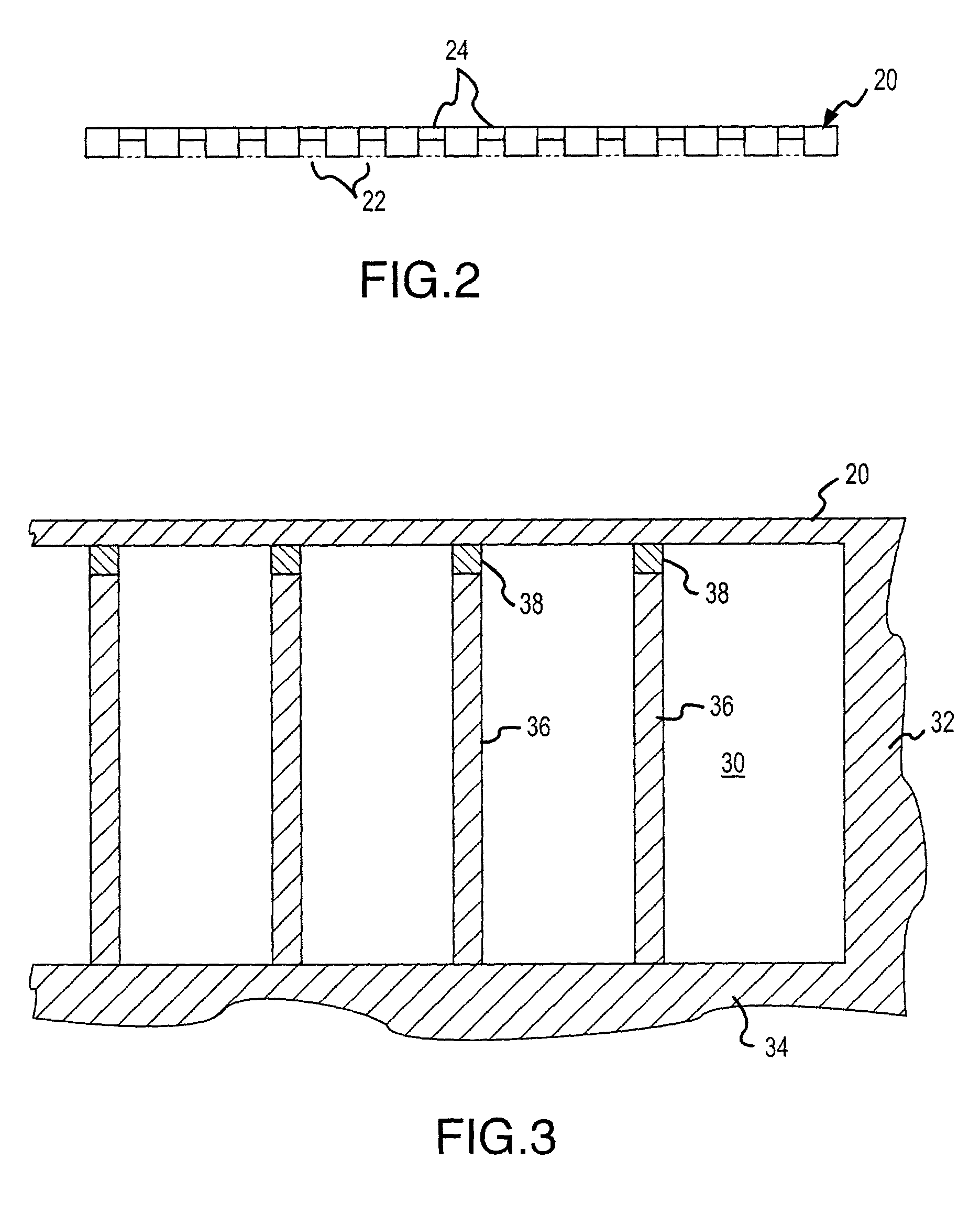Clean room facility and construction method
a technology for cleaning rooms and construction methods, applied in lighting and heating apparatus, ventilation systems, heating types, etc., can solve the problems of large equipment cost, high cost, and insufficient support of equipment on the raised floor, so as to reduce the transmission of vibrations and expand the area of the clean room
- Summary
- Abstract
- Description
- Claims
- Application Information
AI Technical Summary
Benefits of technology
Problems solved by technology
Method used
Image
Examples
Embodiment Construction
[0037]FIG. 1 illustrates, in plan view, a floor 20 for a clean room in accordance with one embodiment of the invention. FIG. 2 illustrates a cross-section taken through the floor 20, as indicated, and FIG. 3 illustrates a further cross-section through floor 20 and the substructure, as indicated.
[0038]In accordance with one embodiment of the invention, as illustrated in FIGS. 1–3, the floor 20 is a poured-in-place concrete floor having a plurality of openings 22 extending through the thickness of the floor. The plurality of openings 22 are preferably arranged in a regular array. The openings can be, for example, square openings, rectangular openings, circles, ovals, ellipsis, triangles, trapezoids, parallelograms, random shapes, a combination thereof, or any other convenient form. In the context of the present invention, the openings serve a number of different functions, including one or more of the following: (i) providing a path for airflow from the clean room into an air plenum t...
PUM
 Login to View More
Login to View More Abstract
Description
Claims
Application Information
 Login to View More
Login to View More - R&D
- Intellectual Property
- Life Sciences
- Materials
- Tech Scout
- Unparalleled Data Quality
- Higher Quality Content
- 60% Fewer Hallucinations
Browse by: Latest US Patents, China's latest patents, Technical Efficacy Thesaurus, Application Domain, Technology Topic, Popular Technical Reports.
© 2025 PatSnap. All rights reserved.Legal|Privacy policy|Modern Slavery Act Transparency Statement|Sitemap|About US| Contact US: help@patsnap.com



